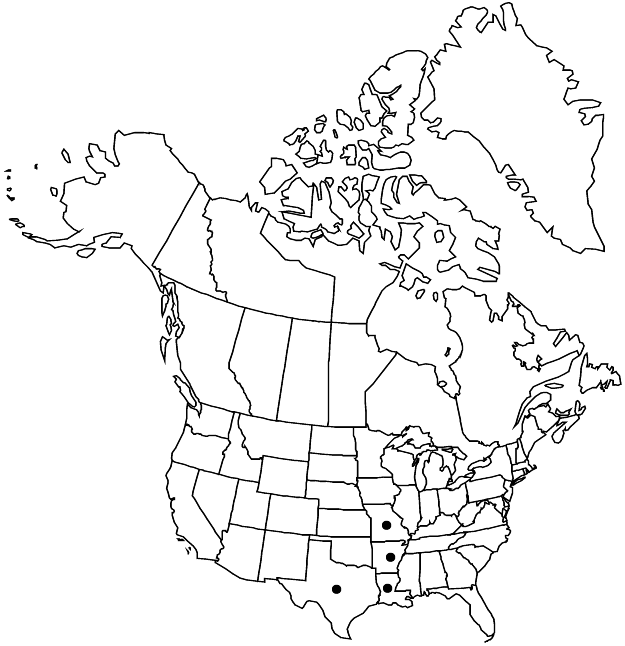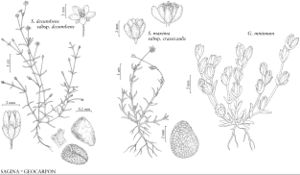Geocarpon minimum
Torreya 14: 67. 1914.
Stems greenish brown or strongly suffused with red, 1–4 cm × 0.5 mm or less; proximal nodes 1–3 mm apart, internodes zigzag, distal nodes 5–10 mm apart. Leaf blades 3–4 mm, margins somewhat involute. Inflorescence bracts connate, strongly red or purple tinged, keeled, triangular, 2.5–3.5 mm, apex acute. Flowers funnelform-campanulate, 3–4 mm; sepal lobes ± erect to slightly spreading, subequal; ovary greenish, ca. 3 mm, apex narrow at anthesis, minutely glandular-toothed or retuse. Capsules opening along 3 wirelike valve margins. Seeds 0.3–0.5 mm.
Phenology: Flowering late winter–early spring.
Habitat: Sandstone glades and alkali barrens
Elevation: 100-300 m
Distribution

Ark., La., Mo., Tex.
Discussion
Of conservation concern.
Geocarpon minimum is known from fewer than 35 sites, about one-third of which have relatively large, vigorous populations. The species is listed as federally threatened. In Missouri, it is found only in shallow depressions in slightly tilted sandstone strata within sandstone glade plant communities. In Arkansas and Louisiana, it is found in saline-alkaline soils on the edge of highly localized, surficial concentrations of sodium and magnesium, locally known as “slick spots”; a similar “saline barren” hosts the recently discovered (2004) Texas population. These austere and nearly barren patches of mineral soil are scattered across savannalike formations classified as saline soil prairies.
Geocarpon minimum is in the Center for Plant Conservation’s National Collection of Endangered Plants.
Selected References
None.
